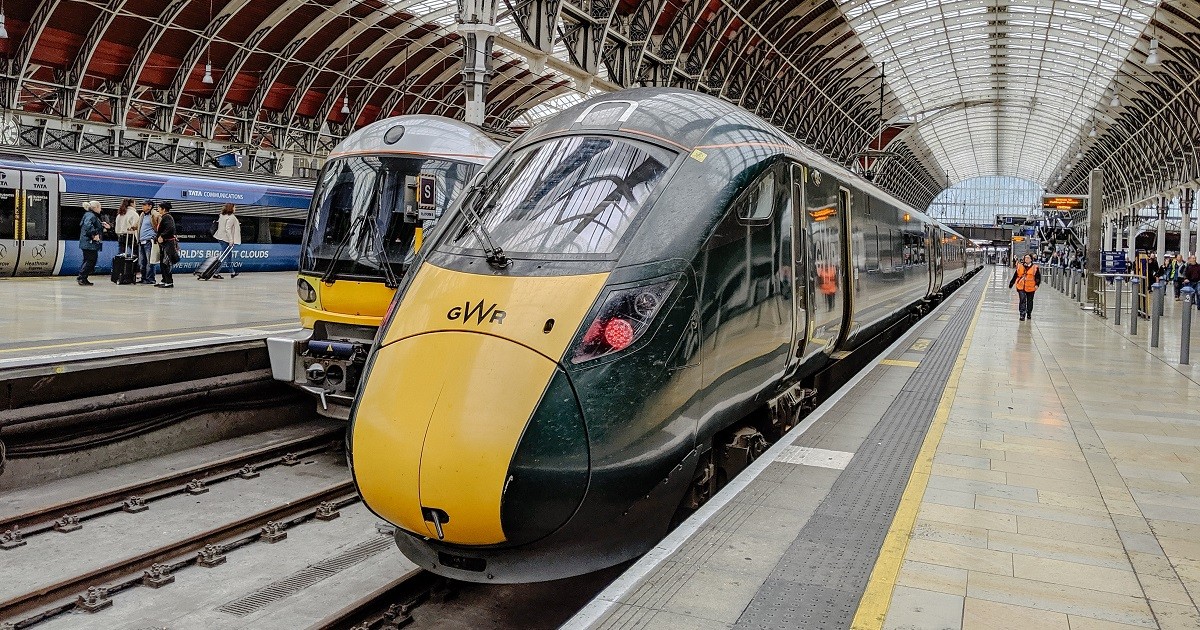How have rail passenger numbers changed since the pandemic?

Following the government’s decision to cancel a large section of the High Speed 2 (HS2) rail project in favour of spending money on other transport projects, we’ve seen a number of claims being made about the number of people travelling by train compared to before the pandemic.
In an interview on GB News on 5 October, transport secretary Mark Harper MP claimed that “business and commuter traffic on the trains is now down by 50% post-pandemic.”
Mr Harper’s comments were paraphrased in a post shared by the channel, which claimed he’d said “Train travel is down by 50%”.
Mr Harper’s claim is based on the results of an annual government survey on travel habits, and refers to the difference in the average number of trips made by train for the purpose of either business or commuting by respondents in 2022 compared to 2019.
It is not correct that overall train use is down by 50%, as GB News suggested.
Furthermore, the results of the survey referred to by Mr Harper were also presented inaccurately in the government’s briefing of its new Network North transport plan, wrongly suggesting that the figures refer to travel habits in 2023, rather than last year.
The graph has since been corrected after Full Fact contacted the Department for Transport (DfT) about the error.
We’ve contacted GB News for comment.
Honesty in public debate matters
You can help us take action – and get our regular free email
Business and commuter travel remained down on pre-pandemic levels last year
Mr Harper told GB News that “business and commuter traffic on the trains is now down by 50% post-pandemic”.
When we asked the DfT about this claim, it directed us to a page in the government’s “Network North” plan to improve transport infrastructure, which was announced earlier this month following the decision to cancel the planned section of HS2 between Birmingham and Manchester.
The page features a graph showing “Rail journeys per person compared to pre-Covid”, broken down by reason for travel, which suggests that business train travel is 48% lower than in 2019, and commuter train travel 42% lower.
These figures are taken from the National Travel Survey (NTS)—an annual government survey designed to monitor long-term trends in personal travel.
It includes data showing the average number of trips taken per person per year, broken down by method of travel and purpose of travelling.
According to this data, between 2019—the last full year before the pandemic—and 2022, the average number of trips per person per year taken by surface rail, for business, decreased by approximately 48%, while the average number of trips by surface rail for commuting decreased by approximately 42%.
These figures show Mr Harper’s claim was broadly correct regarding business travel, when looking at the last full calendar year, though commuter travel recovered to closer to 60% of pre-pandemic levels.
National Travel Survey data for 2023 is not yet available
While the figures mentioned by Mr Harper are correct for 2022, a graph featured in the Network North policy document misleadingly presented these figures as for 2023.
This was likely due to a simple error with the graph’s X-axis. As a result, the figures for 2021 were wrongly shown as for 2022, and the figures for 2020 as for 2021, while 2020 had no datapoint.
As the NTS is published on an annual basis, data for 2023 is not yet available.
This graph has since been corrected after Full Fact contacted the Department for Transport to raise the error.
Government ministers and their departments must take care to avoid the misleading use of data and statistics by carefully following the Code of Practice and wider Office for Statistics Regulation guidance so as to ensure transparency.
It’s also worth noting that, based on the NTS data, GB News’ claim that “train travel is down by 50%” is incorrect. According to the survey, the overall average number of surface rail trips per person per year in 2022 was 27% lower than 2019 levels.
Broadcasters should ensure they accurately report on what was said during an interview, taking particular care not to change the meaning of what was said when paraphrasing an interviewee’s words. If a broadcaster makes an inaccurate claim on any platform, they should take steps to ensure this is appropriately and clearly corrected in a timely manner.
More recent measures of rail passenger numbers
As we’ve explained, the figures used by Mr Harper show rail use broken down by reason for travelling, and relate to 2022.
There is more up-to-date information available about rail travel, although not broken down by reason for travel.
The Department for Transport publishes data showing daily transport use compared to a pre-Covid baseline.
This data shows that National Rail use, excluding the Elizabeth Line in London, which opened in 2022, has been around 20% lower than pre-pandemic levels for much of 2023.
Quarterly data published by the Office of Rail and Road shows that in the first quarter of 2023 (January to March) the number of rail journeys made in Great Britain was around 17% lower than the levels seen over the same period three years ago.
Image courtesy of Tomek Baginksi


